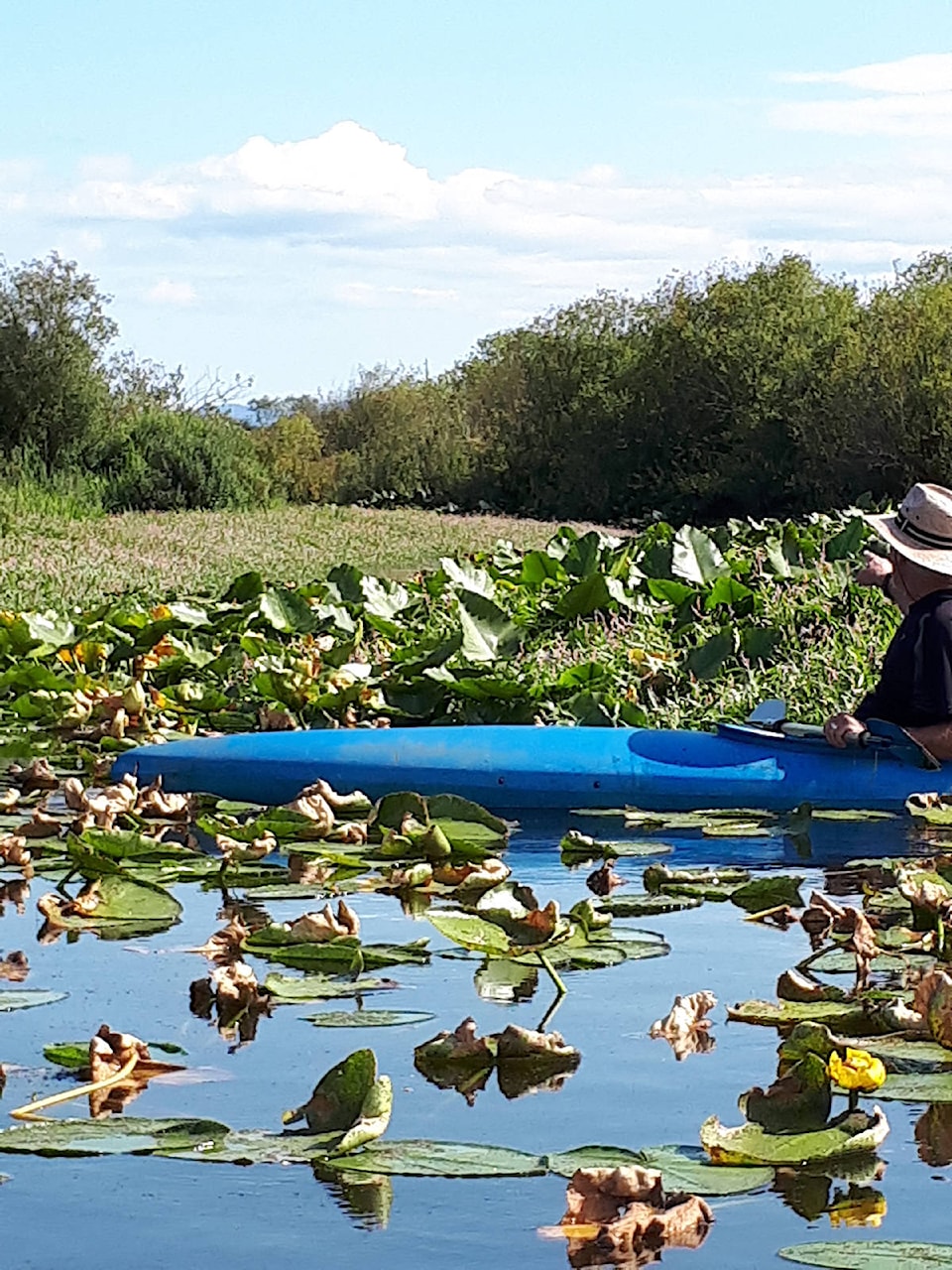North Cowichan is seeking support from senior levels of government in dealing with a proliferation of the invasive plant species called parrot’s feather in Somenos Lake.
Several homeowners adjacent to the lake sent a letter to the municipality outlining the problem.
The letter stated that Dr. Nicolette Pearce, a family doctor in Duncan, had studied the issue on behalf of the homeowners and found that water levels had gone down in the lake in May, but continued to rise during the summer months.
The neighbours determined that the cause of the rising waters in the lake, during one of the driest summers on record, was that the lake’s inlets and outlets were completely blocked with vegetation.
RELATED STORY: TIMBERWEST DONATES SOMENOS LAKE
“Based on our local knowledge, we believe that the lake is effectively being blocked at its outlet by dense mats of parrot’s feather that have been allowed to grow unimpeded since first identified in Somenos Creek in 2015,” the letter from the neighbours said.
“Besides interfering with water flow and fisheries, it is creating stagnant water, which creates hazards such as a breeding ground for mosquitoes near a large urban area. It is also recognized that if the parrot’s feather gets into a lake, it will kill it.”
Parrot’s feather is a popular aquatic garden species and intentional planting has spread it into natural water bodies.
The species is known to out-compete and replace native aquatic vegetation with its dense stands, and has impacted a number of freshwater bodies in B.C.
Once established, parrot’s feather is a difficult invasive to manage.
Due to its submersed and emergent vegetation, using herbicides to deal with the problem is difficult.
The letter stated that its writers believe it is incumbent upon the municipality to take a leadership role to protect Somenos Lake from further degradation from parrot’s feather.
“Somenos Lake is a small lake that does not have the profile of Quamichan Lake, but is every bit as vital to the environmental health of this community, to say nothing of the impact to spawning salmon and migratory birds,” the letter said.
“The tributaries to Somenos Lake carry the groundwater from a large residential population and growing commercial areas including the new hospital. Without the necessary flushing, a toxic catchment basin is being created.”
North Cowichan has recently established a task force to deal with the proliferation of toxic blue-green algae in Quamichan Lake after four dogs died due to ingesting the algae in 2016.
RELATED STORY: NO EASY SOLUTIONS FOR QUAMICHAN LAKE’S DEADLY ALGAE
David Conway, North Cowichan’s engineering director, said the municipality doesn’t have sole authority to manage water bodies in its jurisdiction.
He said that’s the responsibility of the province.
“We do have a consultant that is currently studying the parrot’s feather issue in Somenos Creek and the lake,” Conway said.
“We’re also in the process of trying to arrange a meeting between the mayor (Jon Lefebure), the neighbours and officials from the Ministry of Forests, Lands and Natural Resources. We’d also need participation from federal officials in trying to deal with the problem because there are salmonids in the waterway, and that’s federal jurisdiction.”
Conway said he hopes the meeting between the neighbours, municipality and senior levels of government can be arranged soon.
“We want the problem dealt with because it just takes a very small piece of a stem of parrot’s feather to sprout and spread the plant to other areas,” he said.
robert.barron@cowichanvalleycitizen.com
Like us on Facebook and follow us on Twitter
